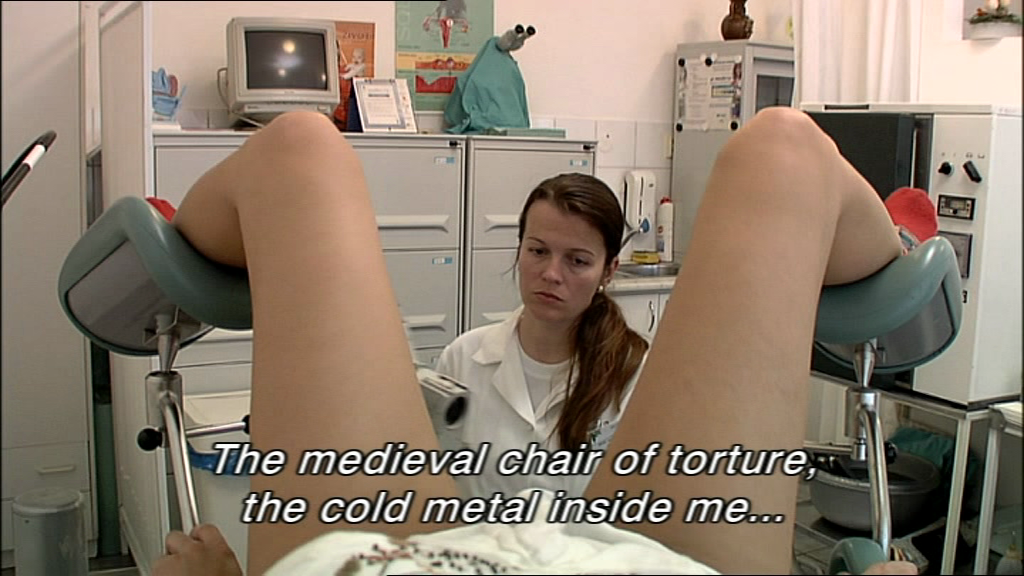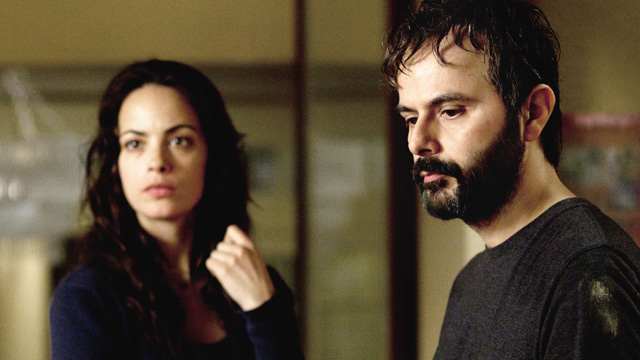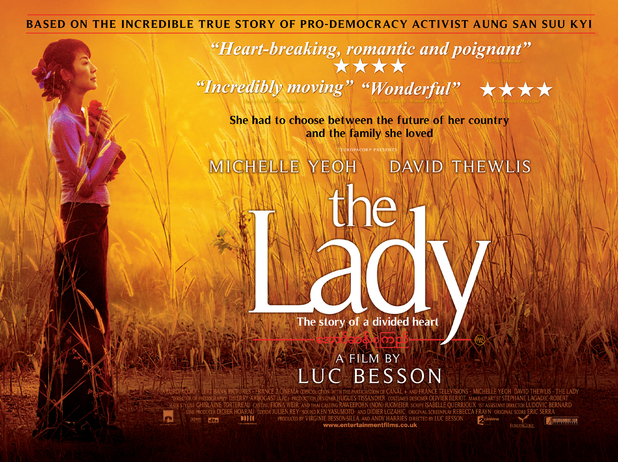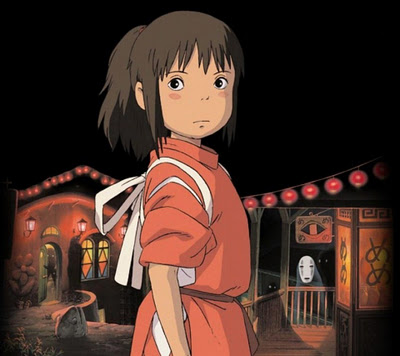Written by Jenny Lapekas.
Menstrual studies is a discipline very close to my heart. While earning my master’s degree, I temporarily became obsessed with texts like Periods in Pop Culture (Lauren Rosewarne, 2012) and Flow (Elissa Stein and Susan Kim, 2010) as I composed my thesis. I was blessed with a supportive advisor who made me realize that those who shot me disgusted looks in the past were in fact the weird, misinformed ones. I find it perplexing that so many have capitalized on menstruation, yet many are still terrified of discussing it in any form or on any platform. Menstruation is uniquely female and yet suggestive of violence, sacrifice, and trauma: that’s compelling. The menstrual cycle reminds us all of our own mortality, the devastating truth that our bodies will eventually decompose or burn into ashes, and that’s terrifying for many people. Why has the “fairer sex” been assigned this burden?
The Moon Inside You (2009) is a documentary film written and directed by Diana Fabiánová. I bought this film last summer at a conference organized by the Society for Menstrual Cycle Research, and I’ve waited far too long to watch it and offer my two cents. The film contains English subtitles and also features interviews in French, Slovak, Portuguese, and Spanish. When I briefly met Diana, I noted that she was very tall, very beautiful, and very accommodating to my questions about her film.
Diana opens her film by interviewing random men on the street so that we can witness their immediate discomfort at the mere mention of the word “menstruation.” Some men actually walk away; clearly, for many men, menstruation simply isn’t real. We are in Bratislava where we watch Diana visit the gynecologist, as she tells us that her menstrual cycle has caused her nothing but pain and annoyance for years. “Being a woman was like punishment for a crime I didn’t commit,” she tells us. She also explains that she doesn’t prefer to medicate herself, but rather to discover the source of her painful symptoms and put an end to them. This introduction helps viewers to sympathize with those who experience painful periods that prevent them from attending school and work, and even cause some women to resent everyday life with a uterus.

Diana speaks to a group of girls at her old school, who explain that boys “have it easier.” This is a useful place to begin, given that our attitudes toward menstruation are shaped from girlhood, and are typically negative. Diana gives one girl a camera to record her “pre-menstrual” experiences. Dominika tells us that a few girls in her class have already hit menarche, but there may be more who “haven’t confessed,” as if it truly is a crime to be a woman, as our narrator tells us. Diana explains that she wants Dominika’s transition into menstruation to be more pleasant than her own was, and I find myself wishing the very same for this lovely young girl. Toward the end of the film, via her video diary, we’re glad to hear that Dominika has in fact made a relatively painless transition into the world of menstruation.

After tackling some myths surrounding menstruation (such as the idea that menstruating women are capable of killing infants by merely holding them), Diana heads west to speak to academics and other knowledgeable Americans at prestigious universities such as Harvard. Well-known menstrual scholar and author of The Curse (2000), Karen Houppert is interviewed. Houppert touches on the terrifying impact menstruation as a taboo has on young girls and also summarizes how and why menstruation played a role in shaping America’s workforce and women’s placement in both the workplace and at home. Martha McClintock, Professor of Psychology at the University of Chicago even explains that if we observe and study the moods of men, their moods are just as erratic as women’s; however, women are at an advantage since we can actually predict how we will likely feel at a given time of the month. While this can and should be read as a sophisticated or evolved trait, women are still stigmatized as hormonal and irrational, especially when experiencing PMS. The fact is that our bodies are wiser than us, and we must listen to our own. If we feel that our stress is unbearable, it may be an indication that we must retreat and care for ourselves until we are prepared to tend to the needs of others.

I found it moving to watch a group of women that Diana gathers to participate in an experimental belly-dancing class. These strangers sit together to share their personal stories of pain and distress related to their cycles and then dance as a group before a large mirror. The preconception that only young girls on the verge of menarche or new to its inconveniences gather in such a setting is misguided; fully developed women with children and years of experience menstruating can offer one another comfort and solidarity in a safe environment such as this one.
Chris Knight, another well-known scholar to academics and menstrual enthusiasts, author of Blood Relations (1995), tells us, “The most ancient thing is to keep women from knowing about their own power.” If menstrual blood is a source of power–and I believe it is–then why has our culture gone to such great lengths to conceal this source of power to make us believe that the menstrual cycle is shameful? In The Vagina Monologues (2007), Eve Ensler shares that she is worried about vaginas, and I think several more of us are worried not about menstruation but how women define themselves by its aura of culpability and self-condemnation.

Reminiscent of Gloria Steinem’s famous essay “If Men Could Menstruate,” Diana asks men on the street if they would try menstruating if they could. While most men say no (and one even suggests that it’s not “cool” to bleed from your vagina), one man claims that he’d like to menstruate so he can finally understand what women experience.

Diana touches on the commodification of our cycles with the help of the birth control pill, acknowledging companies like Tampax that capitalize on the shame that pervades our media messages, and the onslaught of rhetoric that suggests women are somehow biologically flawed by this internal feminine clock that is ever-ticking.
We meet the inventor of the contraceptive implant, who tells Diana that menstruation is not “normal” or “natural,” that the scent of blood is “the scent of death,” and that menstruation is essentially a type of abortion or miscarriage. He believes that once young girls reach menarche, they should experience menstruation once and then immediately prevent ovulation using an implant, since an ovulation that doesn’t result in conception is “useless.” The dangerous and dogmatic recommendations we hear from the “good doctor” should remind us that he’s nothing more than a mechanic who has never owned a car.

Penelope Shuttle, co-author of The Wise Wound (2005), counters this by gracefully explaining, “The thing that’s being given birth to is a new you. You’re giving birth to yourself.” Contrary to what our male doctor claims, the uterus is a place of origins, not death; this doesn’t mean we should all feel inclined to belly-dance like Diana or participate in a drum circle, but it is certainly beneficial to recognize our own sacredness in our blood and to recognize this same light in the women around us.

The Moon Inside You is an honest glimpse into how we frame menstruation around the world and how we situate ourselves within its contradictory rhetoric. The destigmatization of menstruation should address the contradictory assessments we make of its appearance as girls and women work to untangle the prescriptive web woven by one-dimensional media, good old patriarchal conventions, and the people we may know who oppress women by regurgitating these haphazard messages of shame and body horror. Young girls can be proud and delighted to reach menarche, just like I was, yet we’re told to bite our tongues as we grow into young women. As Inga Muscio, author of Cunt (2002) explains, “How many bloody mysteries and future generations are hiding up there, somewhere?”
Recommended reading: seeing red project, Adventures in Menstruating
________________________________
Jenny has a Master of Arts degree in English, and she is a part-time instructor at Alvernia University. Her areas of scholarship include women’s literature, menstrual literacy, and rape-revenge cinema. You can find her on WordPress and Pinterest.



































